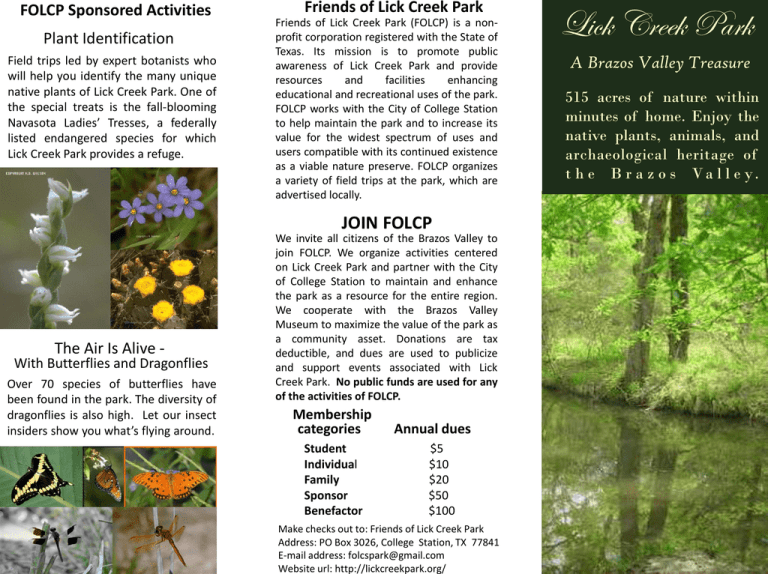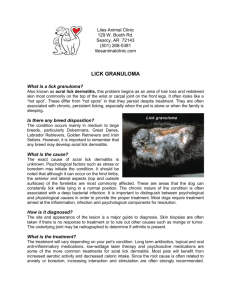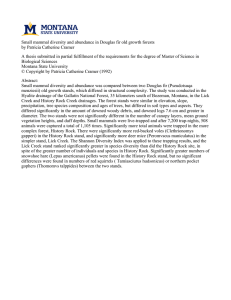Our New Brochure
advertisement

FOLCP Sponsored Activities Plant Identification Field trips led by expert botanists who will help you identify the many unique native plants of Lick Creek Park. One of the special treats is the fall-blooming Navasota Ladies’ Tresses, a federally listed endangered species for which Lick Creek Park provides a refuge. Friends of Lick Creek Park Friends of Lick Creek Park (FOLCP) is a nonprofit corporation registered with the State of Texas. Its mission is to promote public awareness of Lick Creek Park and provide resources and facilities enhancing educational and recreational uses of the park. FOLCP works with the City of College Station to help maintain the park and to increase its value for the widest spectrum of uses and users compatible with its continued existence as a viable nature preserve. FOLCP organizes a variety of field trips at the park, which are advertised locally. JOIN FOLCP The Air Is Alive - With Butterflies and Dragonflies Over 70 species of butterflies have been found in the park. The diversity of dragonflies is also high. Let our insect insiders show you what’s flying around. We invite all citizens of the Brazos Valley to join FOLCP. We organize activities centered on Lick Creek Park and partner with the City of College Station to maintain and enhance the park as a resource for the entire region. We cooperate with the Brazos Valley Museum to maximize the value of the park as a community asset. Donations are tax deductible, and dues are used to publicize and support events associated with Lick Creek Park. No public funds are used for any of the activities of FOLCP. Membership categories Student Individual Family Sponsor Benefactor Annual dues $5 $10 $20 $50 $100 Make checks out to: Friends of Lick Creek Park Address: PO Box 3026, College Station, TX 77841 E-mail address: folcspark@gmail.com Website url: http://lickcreekpark.org/ Lick Creek Park A Brazos Valley Treasure 515 acres of nature within minutes of home. Enjoy the native plants, animals, and archaeological heritage of t h e B r a z o s Va l l e y. PARK TRAIL GUIDE FOLCP Sponsored Activities Bird Walks HISTORY Native Americans occupied the terraces that overlook Lick Creek for millennia. Five sites have been found that contain chert (flint) flakes, byproducts of manufacture of stone knives and projectile points. Deer were the primary large game. Plant food included onion and false garlic bulbs, spring beauty and groundnut tubers, wine cup roots, and greenbrier root nodes. Knowledgeable birders will show you the great variety of bird life that occupies the diverse habitats present in the park. Photograph of the trail map at the parking lot (Rock Prairie entrance) to Lick Creek Park. Not intended for practical use as a map. Archaeology Professional archaeologists describe the traces of human use on the landscape. Although archaeological sites have yet to be thoroughly investigated, various artifacts from both Native Americans and early Texan settlers have been found. One aspect of habitation by preagricultural people is that they lived with the land and used native plants and animals without depleting the resources nature provides. TRAIL DESCRIPTIONS Deer Run, Crushed Stone Pedestrian, Equestrian/Bike 1.64 Miles Iron Bridge Trail, Natural Pedestrian, Equestrian/Bike 1.19 Miles Post Oak Trail, Natural Stone Pedestrian, Equestrian/Bike .89 Mile Herps Galore Raccoon Run, Natural Pedestrian .83 Mile Explore the rich amphibian and reptile world of Lick Creek Park with a fieldseasoned herpetologist. Yaupon Loop, Natural Pedestrian .40 Mile Terms of park use 1) 2) 3) 4) 5) No overnight camping or campfires. No motorized vehicles. Stay on marked trails. Unleashed dogs under voice control. Do not litter or allow your dog to litter. Early Settlers received land that is now Lick Creek Park in the 1840s through a grant from the state of Texas. Archaeological work has uncovered four sites, all from the early 20th century, including remains of an earthen dam with a sandstone spillway, stone piers, a fireplace floor, and chimneys typical of tenant houses. These structures are not yet excavated. Nature Preserve Lick Creek Park is part of a 1265 acre tract acquired by College Station in 1981 in a trade for development land along Highway 6. The City Council set aside 515 acres of the property as a natural area for education and enjoyment of future generations. The park was established in 1987. It provides protected habitat for Spiranthes parksii, a federally listed endangered orchid known as Navasota Ladies’ Tresses . Some glimpses of what you might find.










